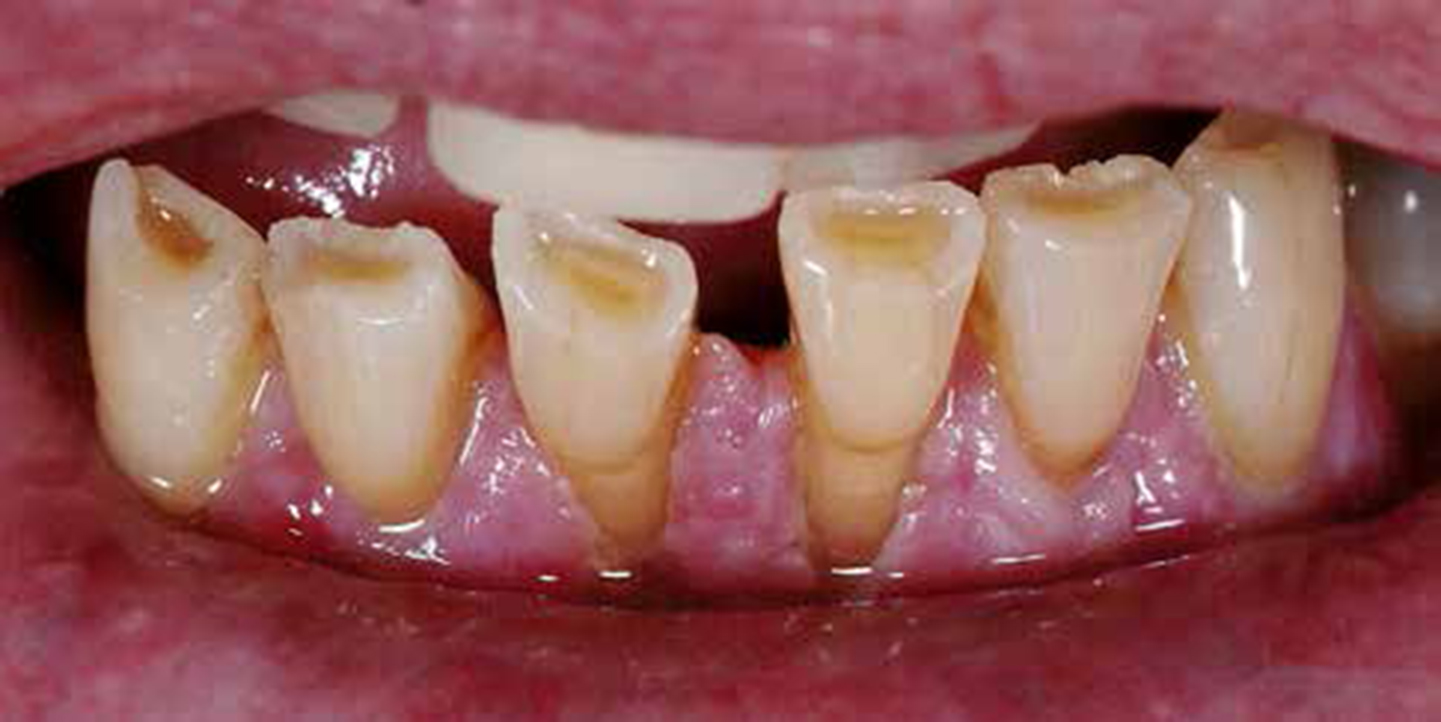Article


A 40-year-old woman came for a routine dental check-up. Clinical examination of her lower anterior teeth revealed tooth surface loss (attrition) and gingival abnormalities, such as recession, ulcerations without destruction of interdental papillae, mild swelling with loss of gingival striping with white diffuse lesions in both free and attached gingivae. These gingival lesions (Figure 1) were slightly sensitive with brushing and not associated with other lesions in her mouth, skin and other mucosae. The patient suffered only from allergic rhinitis, occasionally used anti-histamine tablets and used cinnamon chewing gum regularly.

Q1. Which is the most likely cause of her gingival problem?
A1. The answer to which is the most likely cause of her gingival problem?
The gingivae of this patient show a mild inflammation causing loss of stippling and white diffuse lesions due to Lichen planus. Lichen planus is a chronic inflammation disease which affects the gingivae, either as desquamative gingivitis or as white lesions intermingled with erythema, and small superficial ulcerations. It often affects only the mouth and, rarely, its lesions are limited in the gums, as seen in this patient.
The characteristic findings of acute ulcerative gingivitis, in contrast, are ulcerations restricted to the interdental papillae. Hard toothbrushing sometimes causes either small superficial ulcerations or white lesions due to friction. Cinnamon from chewing gums can cause stomatitis. Candidiasis causes white lesions in the mouth but is rarely seen on the gingiva as these lesions are easily removed on brushing and eating.
Q2. Which of the conditions below most likely signify serious health problems?
A2. The answer to which of the conditions below most likely signify serious health problems?
Infection with Candida species or various Gram negative anaerobic bacteria are responsible for Candidiasis (acute or chronic) and acute ulcerative gingivitis/stomatitis, respectively. Both diseases may indicate some degree of impaired immunity (cellular mainly) due to severe diseases such as HIV/AIDS, malignancies or the use of immunosuppressive drugs such as after transplantation.
